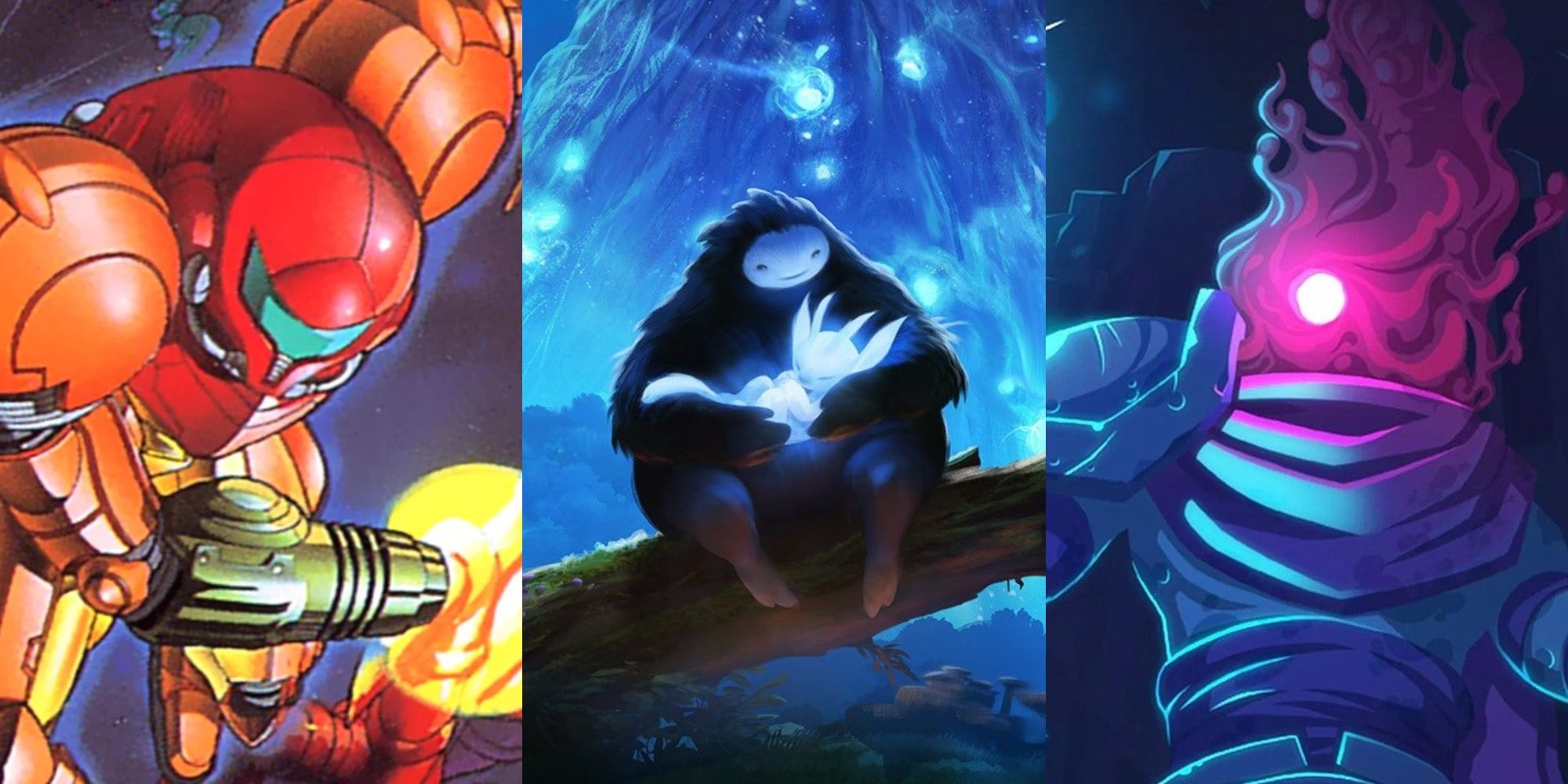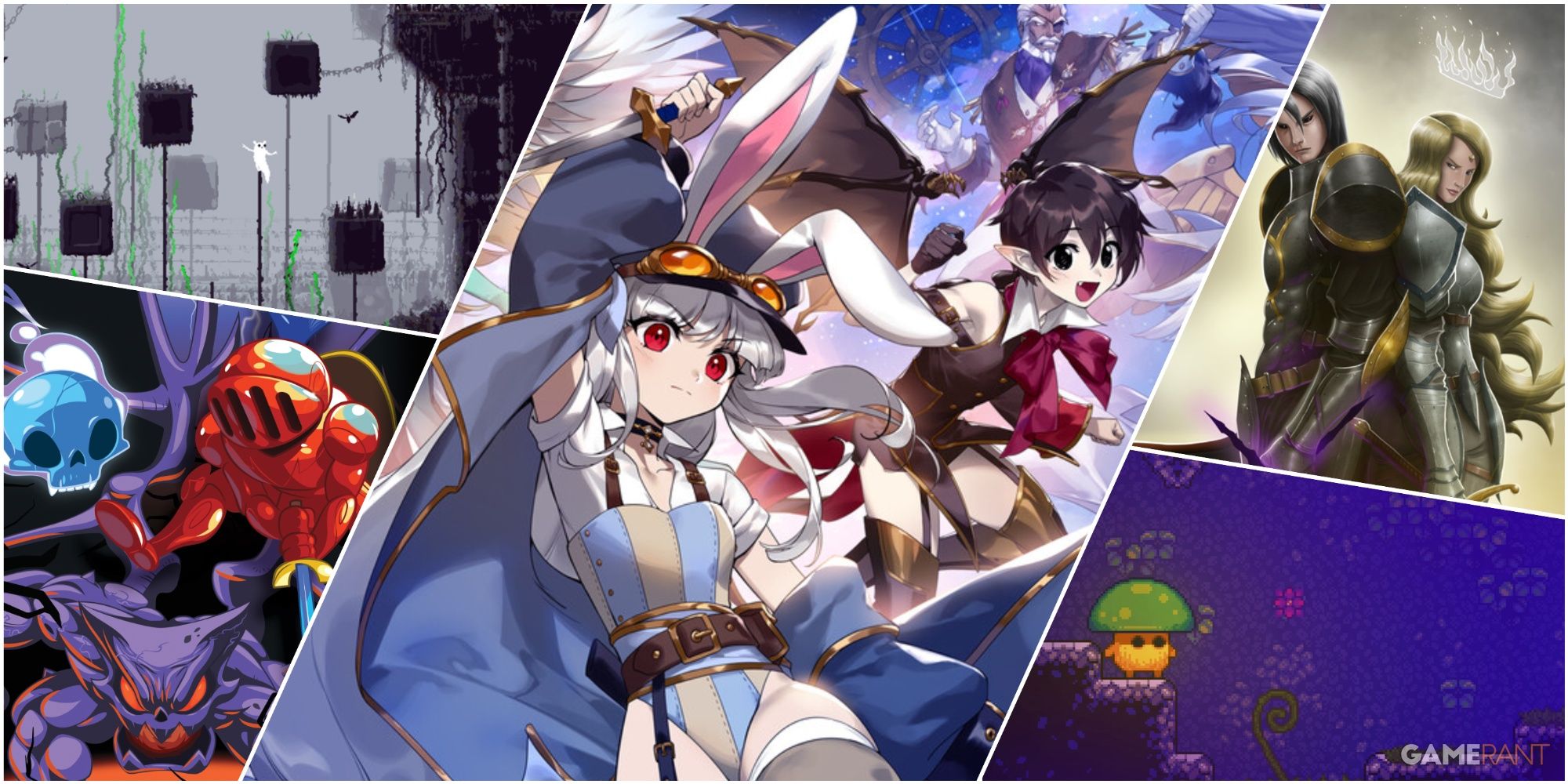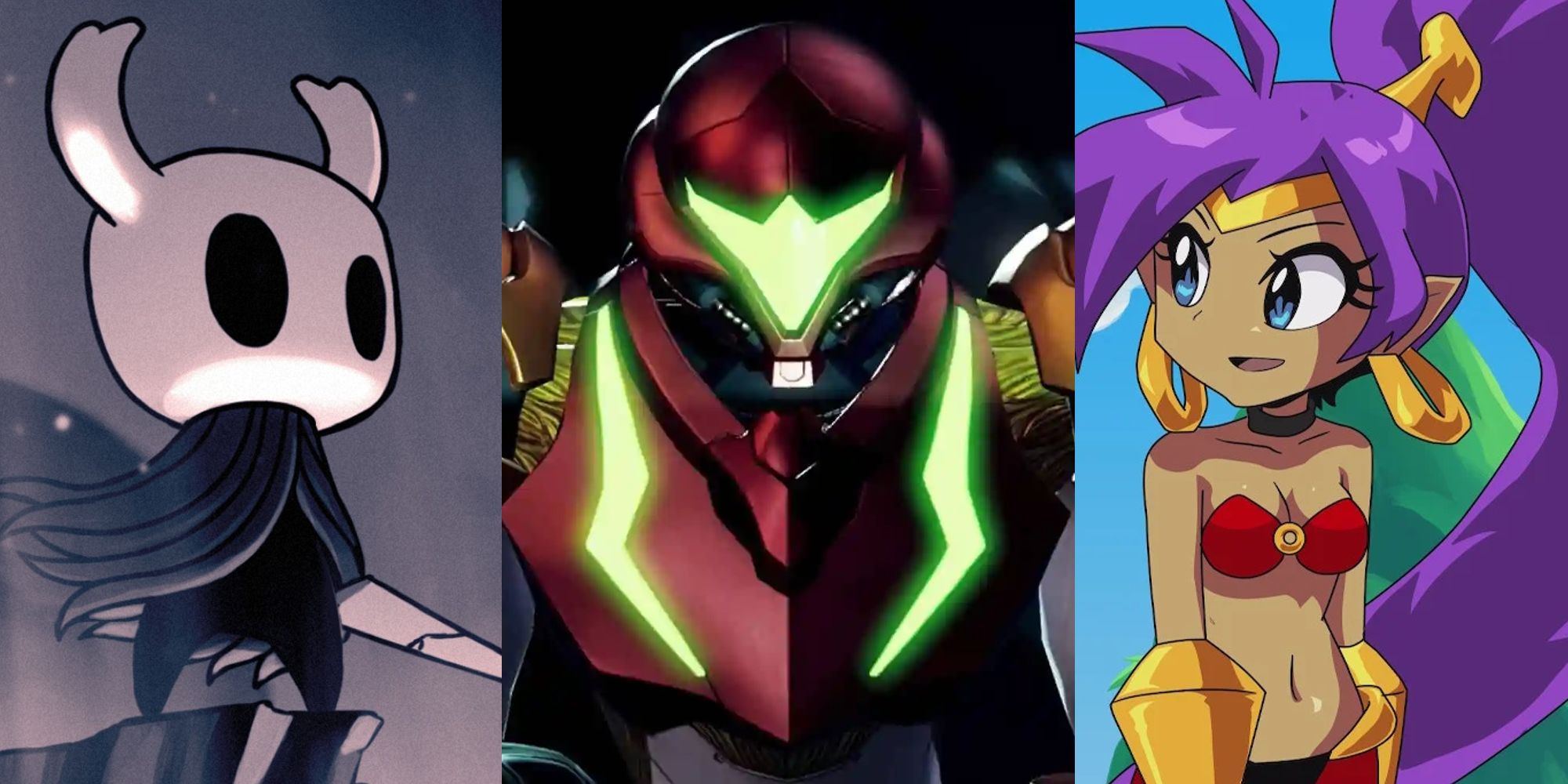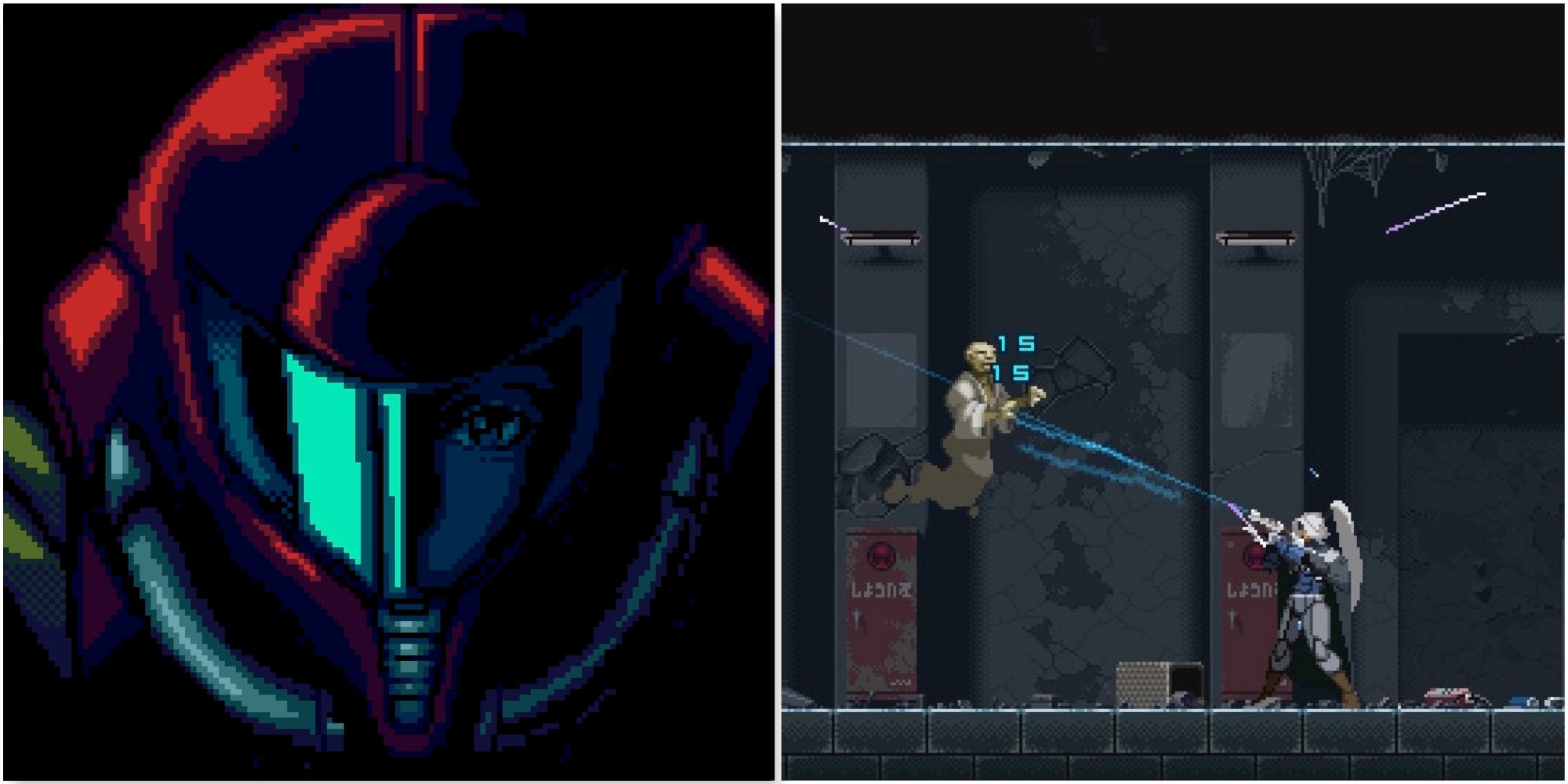Metroidvania Games With the Best Combat, Ranked
Description
Summary
- Metroidvanias can offer combat as engaging as their exploration, demanding players to think strategically in battles.
- Games like Ender Lilies and Guacamelee 2 meld combat seamlessly with exploration.
- Titles like Ori and the Will of the Wisps and Hollow Knight offer satisfying, fluid combat experiences.
For a genre built around exploration, backtracking, and obscure locked doors, Metroidvanias can be surprisingly punchy when it comes to combat. But, while some games treat the action as filler between upgrades, others make every slash, spell, and roll feel essential. These are the Metroidvanias that don’t just let players fight; they demand it.
7:40

Related
10 Most Iconic Metroidvania Protagonists, Ranked
These Metroidvania protagonists are recognized by video game fans everywhere. They defined the genre thanks to their iconic designs.
Whether it’s twitch-perfect dodging, combo-stacking madness, or methodical strike timing, these titles offer combat that can hold its own alongside the genre’s signature level design. When you’re about to spend 40 hours running in circles, the fighting better be good.
8
Ender Lilies: Quietus of the Knights
Even Quiet Knights Know How to Throw Hands
Ender Lilies: Quietus of the Knights might look like a slow-paced, melancholic platformer, but its combat is anything but. Players don’t swing weapons directly; instead, Lily summons the souls of fallen warriors to fight for her, each mapped to different attack styles. One might use a massive axe with a wind-up delay, while another unloads a rapid-fire crossbow. This creates a semi-deck-building layer where every encounter is shaped by how players build their moveset.
Instead of brute-forcing bosses, survival depends on swapping between spirits mid-fight, learning their tells and spacing, and finding synergy between long-range and melee attacks. Combine that with a haunting orchestral soundtrack and gorgeously animated enemies that move with elegance and menace, and every battle becomes a strange kind of duet. This is combat that makes players think, not just react.
7
Salt and Sanctuary
2D Soulslike, and Every Hit Hurts
There’s something almost cruel about how Salt and Sanctuary throws players into its monochrome, oppressive world and immediately expects them to survive on pure timing. It borrows the core combat philosophy from Souls games — stamina management, animation commitment, and dodge-roll invincibility windows — but forces it into a faster, more claustrophobic 2D space where mistakes are punished even more brutally.

Related
8 Best Metroidvania Games with Expansive Worlds, Ranked
While there are many metroidvania style of games out there, these titles have the best world building.
The weight behind every strike, whether it’s a two-handed sword or a wand, has a satisfying thud. Players can build all sorts of playstyles, from nimble rogue builds with poison daggers to heavy shield-and-spear tanks. But, no matter what direction they go, combat feels deliberate. Getting greedy means death, and parrying at the right moment feels like hitting a perfect frame in a fighting game. It’s stressful, yes, but beautifully so.
6
Guacamelee 2
The Only Metroidvania Where Suplexing a Skeleton Feels Right
Guacamelee 2 treats combat like a joke it refuses to let go, but one it takes very, very seriously. While most Metroidvanias split exploration and combat into separate rhythms, here, the two are fused. Movement abilities double as attacks. Uppercuts launch enemies and open new paths. Frog slams hit pressure plates and crack skulls at once.
Combo juggling is at the heart of its fighting system, and every encounter feels like a chaotic lucha libre dance. Players can chain special moves together mid-air, launch an enemy skyward, teleport behind them with a dash, then pile-drive them into another mob. And, all of it is peppered with absurd humor, like transforming into a chicken for speed or to fit through tight spaces… and still being able to claw enemies to death. It’s fluid, ridiculous, and shockingly precise.
5
Aeterna Noctis
Harder Than it Looks, And it Already Looks Brutal
There’s a reason Aeterna Noctis rarely gets recommended to casual fans of the genre. It’s enormous, demanding, and filled with traps that feel like someone’s trolling with a level editor. But, for those who stick around, its combat is the high point. The movement is incredibly fast and fluid, but it’s the precision of its attacks and how they interact with enemy patterns that really shines.
Swordplay has a sharp cadence to it, especially when paired with the game’s dash cancels and air mobility. Enemies have distinct tells, but they often swarm from multiple angles, forcing players to constantly reposition. Boss fights are where it hits its stride, with massive screen-filling foes that demand quick reflexes, stamina control, and attack memorization. It’s the kind of game where death isn’t just expected; it’s baked into the pacing.
4
Dead Cells
Roguelite Chaos Never Felt This Slick
Calling Dead Cells a Metroidvania ruffles some feathers, but the genre bones are there, especially when talking about how it handles combat. It’s fast, vicious, and always mutating. No two runs are the same, and yet the core fighting mechanics stay tight no matter what build is in play. Twin daggers, turrets, ice grenades, giant hammers; it all flows together with satisfying rhythm.
The game encourages experimentation. Want to freeze enemies, then shatter them with critical hits? Go for it. Prefer a vampiric build that heals with every kill? There’s gear for that. But, what really makes it pop is how enemies telegraph their moves without making them too easy to dodge, keeping every encounter twitchy and tense. That feeling of darting through a hallway, stunning three guards, and flinging a grenade over your shoulder mid-roll? Pure gold.
3
Ori and the Will of the Wisps
Combat That Feels Like a Ballet You’re Desperately Trying to Survive
Ori and the Will of the Wisps didn’t just refine its predecessor’s beautiful platforming. It handed Ori a real combat toolkit and turned every skirmish into a fluid, mid-air duel. Gone is the passive energy-ball combat from Blind Forest. Now, players get a Spirit Edge that slices in arcs, a giant hammer that sends shockwaves through the floor, and an array of support abilities that create entirely different styles.
8:32

Related
15 Best Metroid Clone Games, Ranked
These are some of the strongest clones of the iconic Metroid franchise that fans have seen.
Enemies are aggressive but never unfair. Fights often involve using the same platforming tools for both movement and survival, like dashing off a projectile and launching into an overhead slash. The visuals make it look serene, but the action is fast and brutal, especially in the more intense Spirit Trials and challenge arenas. When a combat system can make a tiny glowing forest creature feel powerful without breaking immersion, it’s doing something right.
2
Blasphemous 2
Holy Combat, That Was Brutal
What Blasphemous 2 lacks in subtlety, it makes up for in sheer, ruthless impact. Combat here is unforgiving and grounded. Every enemy can take a chunk out of health if ignored, and every weapon animation demands commitment. But what separates this sequel from its already-praised predecessor is how much smoother and more varied the action feels.
Players now get access to multiple weapon types from the start, each tailored to different combat scenarios. The twin blades are fast and combo-friendly. The flail hits in wide arcs, perfect for controlling space. And the greatsword? Slow, but devastating. What makes it sing is how these weapons also tie into traversal and puzzle-solving. Combat isn’t isolated; it bleeds into everything. And, the grotesque enemy design, inspired by Spanish Catholic imagery, gives every fight a sense of dread that’s hard to shake.
1
Hollow Knight
Precision, Patience, and Pain
No matter how many new contenders show up, Hollow Knight still holds the crown. Its combat is deceptively simple: a single nail swing, a jump, a dash. But, it’s the interplay between those basics and how enemy encounters are constructed that makes it special. Every enemy has a rhythm, and learning to dance around them with pinpoint dodges and timed strikes feels like cracking a code.
The game isn’t generous. Health is sparse, invincibility frames are tight, and death sends players back to recover lost Geo. But that tight design means every small victory feels earned. The boss fights, especially ones like Hornet, the Mantis Lords, or Nightmare King Grimm, demand near-perfect execution. And when paired with charm loadouts that tweak abilities in subtle ways, the combat becomes a playground for players who want full control. It’s not just the best combat in Metroidvanias; it’s some of the best in 2D action, period.

More
8 Best Metroidvanias That Focus On Ranged Combat, Ranked
Strike from a distance and be safe in these range-focused Metroidvanias.




